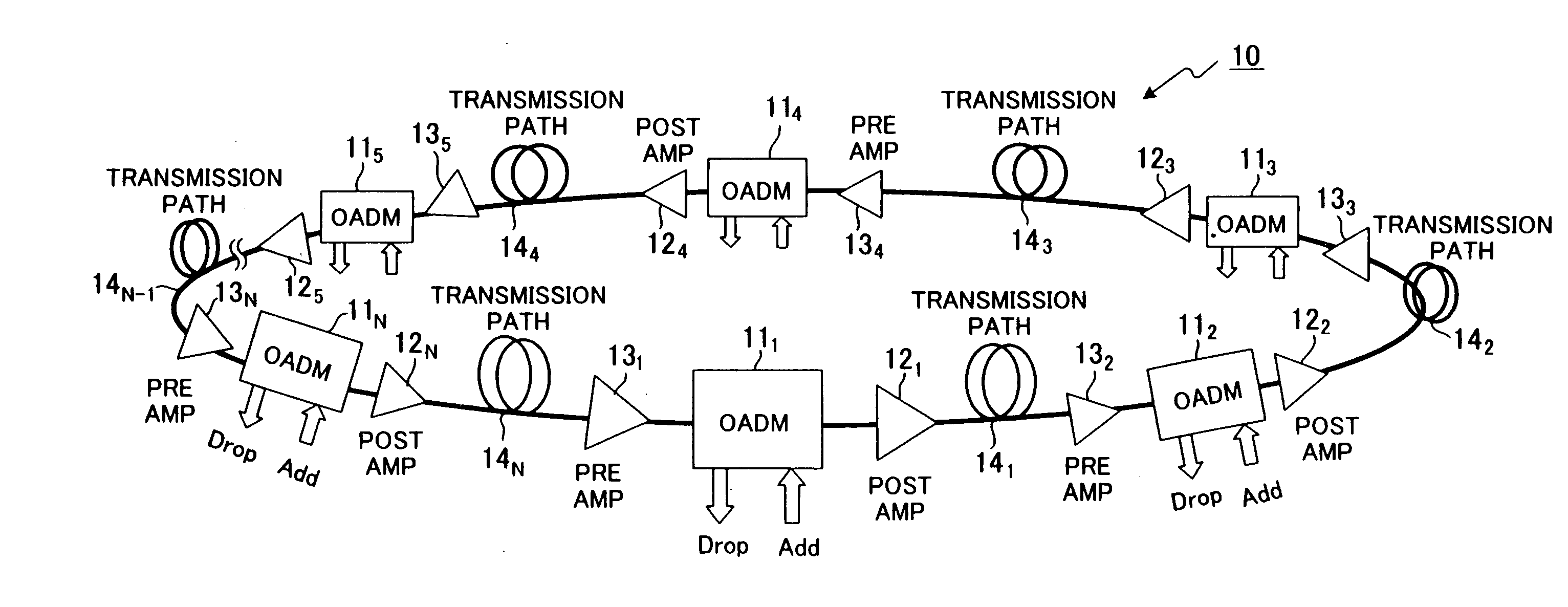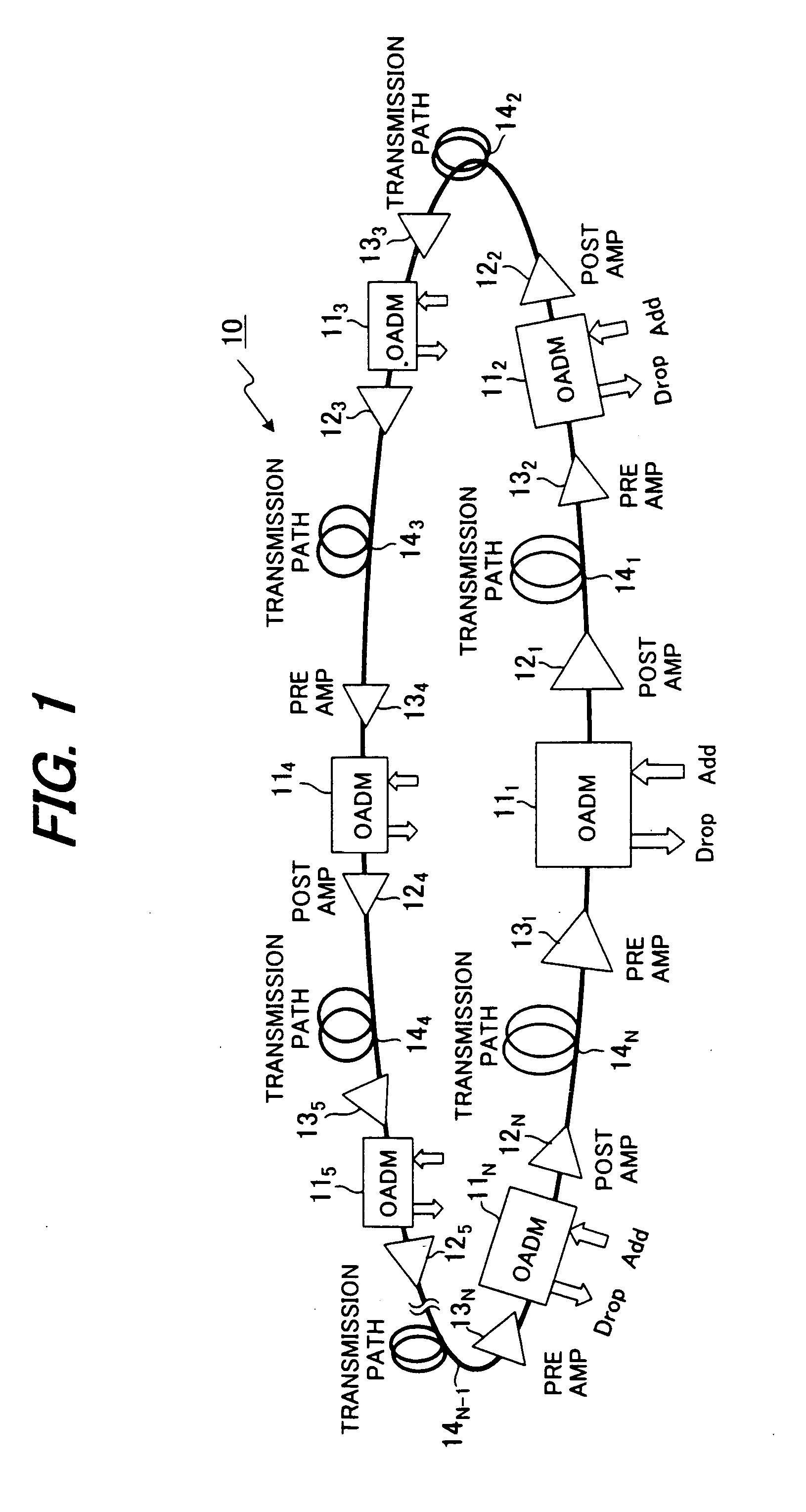Wavelength-division-multiplexing optical transmission system and control method thereof
a transmission system and optical transmission technology, applied in the direction of transmission monitoring, electromagnetic repeaters, instruments, etc., can solve the problems of signal transmission error, large output level per wave, and fluctuation in optical input level
- Summary
- Abstract
- Description
- Claims
- Application Information
AI Technical Summary
Benefits of technology
Problems solved by technology
Method used
Image
Examples
Embodiment Construction
[0035]FIG. 1 is a drawing of a wavelength-division-multiplexing optical transmission system to which the present invention can be applied, and in that system N number of optical-node apparatuses (OADM) 111, 112, . . . , 11N that perform relay transmission of wavelength division multiplexed light (WDM signal light) are placed at appropriate locations (nodes) along the main optical transmission path 10. The main optical transmission path 10 is constructed so that it is ring shaped; therefore, by defining the space between adjacent OADM as a span, the number of spans and the number of OADM is the same, so there is N number of spans.
[0036]Each OADM 111, 112, . . . , 11N multiplexes data that is input from user terminals (not shown in the figure) under it on to the WDM signal light on the main optical transmission path 10 and transmits it (Add), or separates and extracts data for a user under it from the WDM signal light on the main optical transmission path 10 and transmits it to the us...
PUM
 Login to View More
Login to View More Abstract
Description
Claims
Application Information
 Login to View More
Login to View More - R&D
- Intellectual Property
- Life Sciences
- Materials
- Tech Scout
- Unparalleled Data Quality
- Higher Quality Content
- 60% Fewer Hallucinations
Browse by: Latest US Patents, China's latest patents, Technical Efficacy Thesaurus, Application Domain, Technology Topic, Popular Technical Reports.
© 2025 PatSnap. All rights reserved.Legal|Privacy policy|Modern Slavery Act Transparency Statement|Sitemap|About US| Contact US: help@patsnap.com



